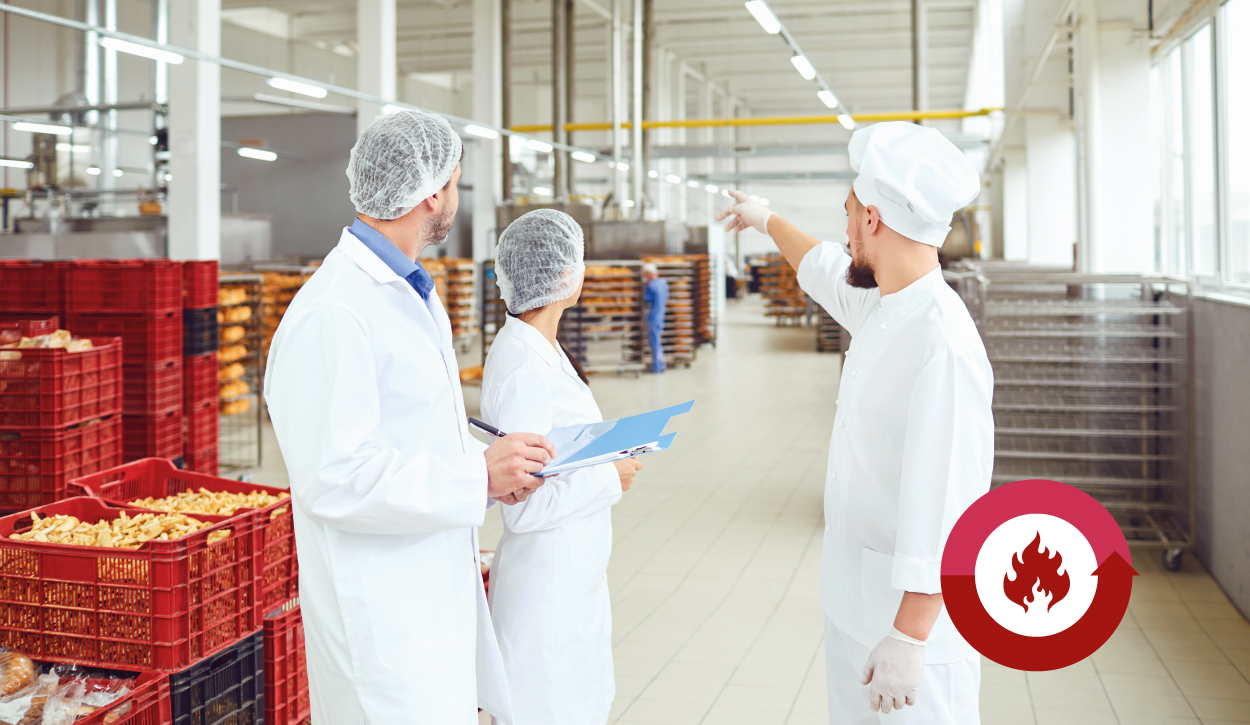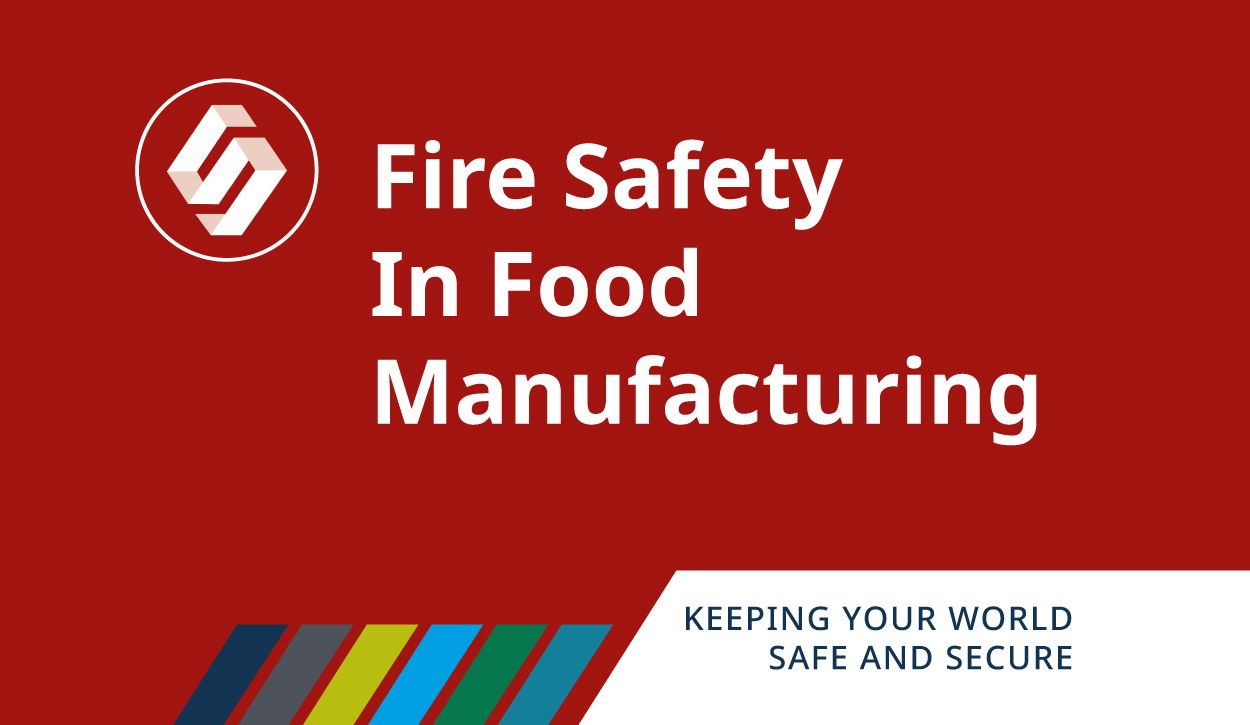Fire safety In Food Manufacturing

Food manufacturing has a poor reputation for fire losses sustained in factories. As food is being processed and packed, there are ample opportunities for fires to break out.
To minimise your loss of property, stock, and life, basic safety measures must be maintained and managed. We hope this article helps you to do this.
The original three fire factors
Air, fuel and heat sources, are all required to produce food. Then, when you throw in another (combustible) ingredient, dust, into the mix, there is no wonder why the risk is increased.
If you’re the responsible person for fire safety in your food business, you need to pay attention to specific areas of fire safety.
So, what are the most common causes of fire in Food Manufacturing
The seven most common causes of Fire are:
- Faulty equipment. Faulty electrics such as loose wires or defective equipment can overheat and cause sparks.
- Lighting. Check yours are not too close to flammable materials.
- Unclean ducting. Dirty ducting in your extraction system increases your risk of fire.
- Cooking. Where there is oil and flames, you are at risk.
- Clutter. We often see blocked escape routes and piles of food boxes ready for the bin, which increases the risk of fire from a stray cigarette.
- Combustibles on site.
- Arson.
Did you know?
Everyone in business needs to carry out regular Fire Risk Assessments and have an emergency plan. Are you up to date in these areas?
See for yourself six food manufacturer fires that hit the headlines.
Food Manufacture has detailed six food manufacturing fires and how they started. Some are more devasting than others. Read more here.
What can you do to reduce your risk of a food manufacturing fire?
Though food manufacturing poses additional risks and challenges when it comes to preventing fire, you can keep your staff, your assets, and your premises fire safe with an organised team and a bit of planning. Below are a few of our suggestions:
Regular Fire Risk Assessments
A good fire risk assessment should be completed by a trained professional, referred to as a responsible person. Some businesses prefer to outsource their fire risk assessments to a fire safety professional. Why? Because a fire safety professional will be able to identify risk elements you cannot, and their outside perspective and experience will identify issues you may have overlooked.
At SS Systems, we manage a lot of FRA for our customers, and we love to talk to you about how easy it is to hand over the reins.
Putting in place preventative measures
After establishing your risks in your FRA, you then need to take preventative steps to protect your food processing facility from fire. Doing this can also help you streamline the implementation of other fire safety measures.
- Is your fire safety equipment routinely serviced and maintained?
- Are you meeting compliance?
- What safety equipment is best for you and your food manufacturing facility?
- Do you have suitable fire suppression systems to extinguish the fire if one did occur?
- Do you have the appropriate emergency signage and exit lighting required?
- Don’t forget about the outside and the storage areas of hazardous chemicals.
Again, we are happy, confident and fully compliant to manage on your behalf.
Educational components.
If and when a fire breaks out, all staff need to draw from their training to know to act. Therefore, focusing on education is vital.
Do you have the right people trained in fire safety, fire extinguishers etc.? Remember always to have a trained member of staff on-site when operational.
We can help you train your fire wardens, supervisors, and staff, so you know what to do in case of a fire. In particular, fire evacuation procedures need to be thoroughly addressed.
If you’d like to discuss any of the above-related services, please call 03300 417170, where one of our experienced staff members will be happy to help.

